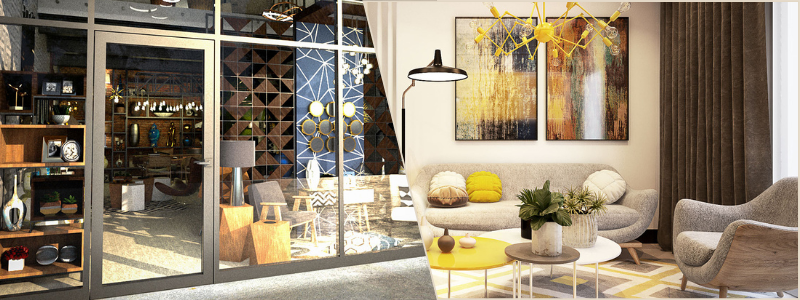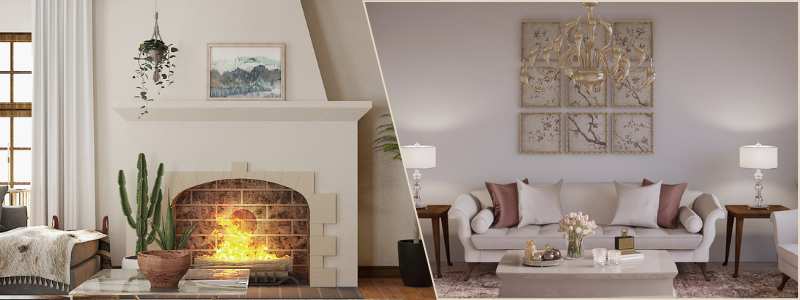When you enter a business or home for the first time, you may not realize that your first impression is the lighting of the space. Decorous lighting can make a home feel modern, spacious, clean, and welcoming. With new headways in lighting technology, what was once a periodic installment is now a wholly unique design feature to consider in your home or office. Not only does investing in a lighting design expert lower your electricity bills, but it can also entirely transform the mood and quality of your home.
Average costs to hire an architectural lighting designer:
| Minimum cost | $4300 |
| Average Range | $5,050 – $6,120 |
| Maximum cost | $7100 |
The national average cost to hire a lighting designer is between $5,050 – $6,120. However, others factors may either lower or increase this value significantly, such as the experience of the lighting design professional and the scope of your project.
Why should I hire a professional lighting designer?
Usually, artwork, furniture, and mood are considered to determine the proper color temperature in every room. A lighting designer can take the tricky process of choosing the bulbs with a color temperature that best complements the room. A lighting designer is familiar with the three types of light and integrating them into space. The first is ambient lighting which is quite subtle but provides most of the illumination in a room. Then there is task lighting that focuses on making certain areas shadow-free.
Thirdly, there is accent lighting which adds personality to a room and is usually a statement piece. Using three types of lighting, the professional can highlight architectural hallmarks while maintaining functionality. LED lighting offers an eco-friendly, cost-saving approach that clients can also choose. A lighting professional can also integrate and program smart home software if necessary and select suitable dimmers to ensure neither flickering nor fire hazards.
Start by creating a budget and hire a lighting designer whenever you decide to go for a creative lighting plan to impress your guests. Of course, you may not need a lighting designer if you’re looking into standard and practical lighting. We have seen that a quality lighting system can positively affect your productivity, retail sales, and the ability to attract people to downtown districts even after dark.
How it works is that a lighting designer will select equipment from numerous manufacturers to help keep bids competitive. Simply due to experience, they are also familiar with cost-effective equipment and installation methods to stay within budget. A lighting designer can also help choose cost-efficient technology and ensure space is not over-lit (a common and costly mistake.) Sometimes, by integrating natural light during the day, it can further reduce costs.
RELATED: Architectural 3D Rendering Styles and Visualization Techniques

Key tips when hiring an architectural lighting designer
- Be conscious of quotes that seem too low, especially for an advanced lighting system. You may not get a long-lasting lighting system, so always ensure it is new.
- Hire a lighting designer before building your house. They can work with your architectectural planner, contractor, and advocate during the construction process.
- With many cities looking to reduce light pollution and energy waste, your lighting designer must know local energy codes to avoid delays. Many states and municipalities have adopted the International Energy Conservation Code (IECC) or strict local codes. In addition, a particular project requires a Leadership in Energy and Environmental Design (LEED) certification.
- Check out portfolios and reviews to ensure their work is of excellent quality, and they can leave their clients satisfied- especially with other projects similar to yours!
- Check your local regulations to inquire whether a Lighting Designer requires a license for works that exceed a $500 limit (supported only in some states). If not, look to see if the lighting designer you consider hiring has been certified by independent organizations or part of the American Society of Interior Designers (ASID).
- Ensure your designer has adequate liability insurance and workman’s compensation insurance for injuries or health risks related to the job. You don’t want a messy legal problem on your hands!
- Suppose the project is large ($500 and over); consider a bonded contract. Contracts ensure both the client and the lighting designer have a safety net if unexpected problems arise, such as costs turning out much higher than initially negotiated or a designer attempting to leave midway through the project.
Rate types and average costs
Sure, there are many different metrics by which a lighting design professional can charge you, but the most common way is at an hourly rate. At times, you may also get charged a flat rate for a standard task.
Lighting design hourly rate
Hourly charges are meant for large projects offering a wide range of services. Experienced lighting design professionals can be between $125 to $250 per hour, while an apprentice may charge lower, $65 to $85. It is also helpful to know that lighting designers often follow two general business models: selling products or ordering them directly from manufacturers.
When they order it directly from other manufacturers, often at times, they re-sell it to their clients with an added percentage and an hourly rate for design and other services. Designers who sell their products may discount their services when you purchase directly from them. Either way, it is helpful to inquire about all discounts/combination services a lighting designer offers to determine the most cost-effective option while aiming for quality results.
Flat rate
Flat rates are considered for standard projects with a well-defined scope of work. These rates are usually between $2,000 to $10,000. You do not have to do much guesswork or expect surprise costs. Out of all the fee structures, flat rates are the most transparent. However, this method does have its limitations and less flexibility. There will probably be a set amount of hours for consultation, design, and installment. It will also take extra time before the project starts to negotiate the flat fee as the costs for the entire project has to be considered. Therefore, the ease of this fee structure is excellent but only effective for standard or small projects.
RELATED: Architectural Illustrations vs. Architectural Visualization Services

Per project costs
A per-project cost is similar to a flat rate but with a little more calculation based on the current state of the wiring, the project’s scope, the labor required, and other specifications. A per-project cost is commonly applied for standard projects where an experienced lighting designer knows how much the project will cost.
Examples of a per-project estimate are deck lighting which starts at about $1,500, or perimeter pool lighting, which starts at about $2,500. It is also helpful to note that many lighting designers charge using a combination of different fee structures. A flat rate plus an hourly charge is standard.
Additional factors
There are a few general factors that will consistently raise the price of hiring a lighting designer
- You live close to a city
- The lighting designer’s experience (up-to-date portfolio, public reviews, many references)
- The lighting designer’s services are in high demand.
Additional services will increase the total cost of hiring a lighting designer. Here are a few examples:
- Repairing an existing system that is necessary
- Cleaning or disposing of any waste materials.
- Testing for hazardous materials
- Subcontracting costs- a lighting designer may occasionally need the help of an electrician, architect, or general contractor.
- Any taxes for materials and supplies
- Cost of permits required to proceed with the project
- Daylight studies (the lighting designer will study the daylight in a room to determine how much artificial light is needed)
- Supervision of construction (management services cost extra)
How Cad Crowd can help
Lighting design meets 3D Cad Design technology– If you have an excellent idea for an innovative lighting design and you need help bringing it to life, Cad Crowd’s got the right professional team! Our specialized lighting designers offer 3D renderings, simulated models, up-to-date software such as freelance AutoCAD, as well as electrical drawing services. Get a free quote now for your lighting design project.
